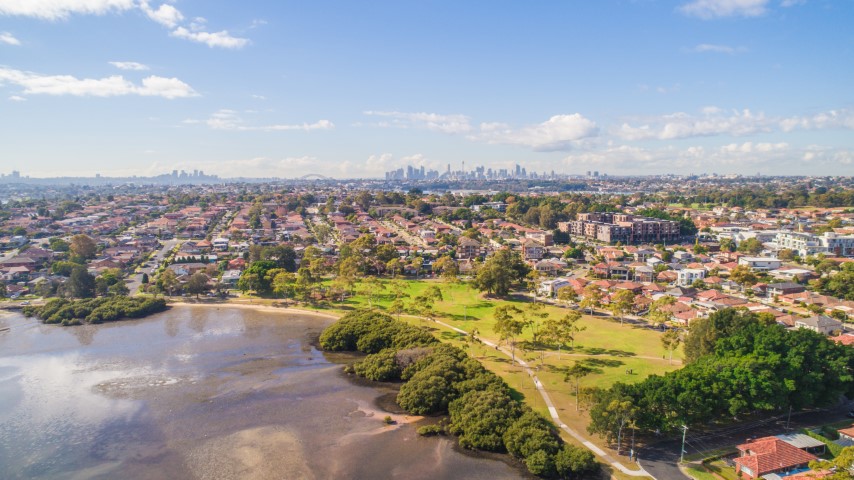Flora and fauna
Our Biodiversity
Biodiversity is most simply defined as the variety of life on earth. All living things interact with one another and impacts to one species are usually felt by another. For example, the loss of small, insect-feeding birds in suburbia is known to result in an increase in problem insects like termites.
The City of Canada Bay is committed to protecting and enhancing biodiversity so that our nature and our way of life are preserved.
Despite the small size of our natural environment, the City of Canada Bay remains home to a diverse range of native plants (flora) and animals (fauna). You can see a chronological list of studies into our local flora and fauna by following these links:
- Concord Municipal Council Survey of Summer Birds 1982-1983
- Concord Municipal Council Native Vegetation Study 1980
- Concord Municipal Council Register of Significant Trees and Vegetation 1983
- City of Canada Bay Flora Inventory 2002
- City of Canada Bay Fauna Survey 2002-2003
- City of Canada Bay Fauna Survey 2013-2014
Our recent 2023-24 Flora and Fauna Monitoring Study found several important threatened species in the City of Canada Bay, including the three endangered ecological communities listed below and nine threatened local or migratory fauna species:
- Grey-headed Flying-fox (Pteropus poliocephalus)
- Eastern Bentwing-bat (Miniopterus schreibersii oceanensis)
- Little Bentwing-bat (Miniopterus australis)
- Large-footed Myotis (Myotis Macropus)
- Eastern Osprey (Pandion cristatus)
- Powerful Owl (Ninox strenua)
- Latham's Snipe (Gallinago hardwicki)
- Australian Pied Oystercatcher (Haematopus longirostris)
- White Bellied Sea-Eagle (Haliaeetus leucogaster)
Importantly, Latham's Snipe is a migratory species which breeds in Japan and Russia and only visits Australia from February to July. Another migratory species observed in the City of Canada Bay was the Bar-tailed Godwit, which similarly breeds in the northern hemisphere and winters along the east coast of Australia.
The following three threatened or endangered ecological communities were also observed in the LGA and their condition rated using the Biodiversity Assessment (BAM) Method:
- Sydney Turpentine-Ironbark Forest (Sites with the best condition vegetation include the Rivendell Peninsula, Yaralla Peninsula and Queen Elizabeth Park, Concord).
- Estuarine Swamp-Oak Forest (Sites with good condition are notable within Quarantine Reserve, Abbotsford and Lovedale Place, Concord West).
- Estuarine Saltmarsh (A total of 151 sites along our foreshores were recorded, with the largest being at Prince Edward Park and Yaralla Bay).
Biodiversity in Backyards
City of Canada Bay launched the Backyards for Biodiversity program to support our community in creating habitat stepping stones, or refuges, for animals in residential and school gardens. By getting involved in wildlife gardening, you can help improve biodiversity in our area. The program includes:
- a guide to help you create a native garden and add habitat features to your garden
- native gardening workshops
- an increased amount of native plant giveaways.
View our Backyards for Biodiversity Guide here, and find upcoming native plant giveaways and workshops on our What's On page. View our Native Garden Factsheet for a quick guide on creating spaces for native wildlife such as bees, butterflies and small birds.
Native Animals
Native animals are protected in NSW under the Biodiversity Conservation Act 2016. It is an offence to harm, kill or remove native animals, including their nests or eggs unless you hold a licence. This includes Magpies (Gymnorhina tibicen), Australian White Ibises (Threskiornis molucca), and Brush-turkeys (Alectura lathami) and their mounds. It is difficult to tell if a brush turkey mound is active or inactive, so it's always best to not disturb it and contact Council by calling 9911 6555.
If you witness someone harming a native animal, Council recommends that you do not confront them, but record the behaviour if possible, and immediately make a report to the NSW Department of Planning and Environment by calling 1300 361 967 or emailing info@environment.nsw.gov.au
If you see an injured or sick native animal, Council recommends that you contact WIRES as soon as possible by calling 1300 094 737. The trained responders at WIRES can guide you on how to manage the wildlife injury.
Help keep our wildlife wild and safe by not feeding them. Many people enjoy feeding birds and animals but this may result in future problems for animals and the community. Here are some reasons why you should not be feeding wildlife:
- Animals that expect to be fed by people can become aggressive, as they may harass people for food when they are hungry or end up becoming scavengers, losing their ability to forage for natural foods suited for their diet.
- Human food like processed seeds, bread and other foods are not safe for animals as they are not part of the animal's natural diet and could make them very sick.
- Feeding wildlife can spread diseases. Feeding can lead to large groups of animals to congregate so it’s very easy to spread disease and parasites between them.
For more information about living with native animals, visit NSW Department of Planning, Industry and Environment.
Big Birds and Bats
Since the 2000s, there has been an increased number of large native birds and flying-foxes (sometimes called fruit bats) in our local area. These include the Australian White Ibis, Brush-turkey, Sulphur-crested Cockatoo, Grey-headed Flying-fox, plus several native birds known for swooping behaviours such as the Noisy Miner and Australian Magpie.
Local governments and education institutions want to better understand the movements and behaviours of these animals. You can help by downloading the Big City Birds app and recording sightings of them and their nests or roosting camps.
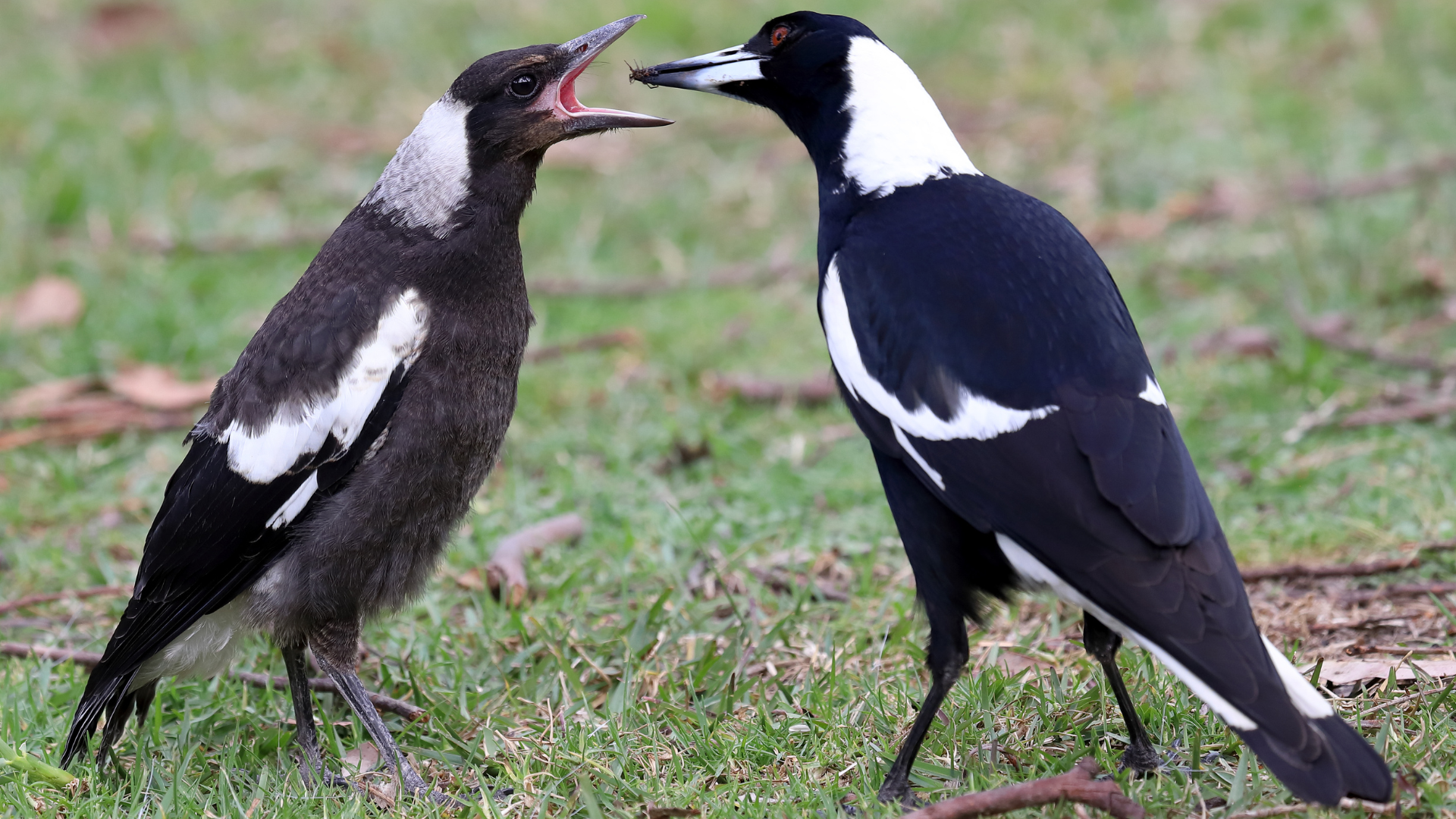
There are several species of native bird which are known to swoop passers-by for a variety of reasons. Some of these birds, like the Australian magpie, do so only occasionally to protect their young, whereas other birds, like the Noisy Miner, are naturally aggressive and display swooping behaviour for territorial reasons.
The following information will help you better understand our native swooping birds, as well as give tips on how to avoid being swooped.
Australian Magpie (Gymnorhina tibicen)
The Australian Magpie is a common resident of suburban parks and gardens of Sydney. They are a native species protected under the NSW Biodiversity and Conservation Act 2016 and it is an offence to harm them or their nests.
Most magpies are friendly and social, with young magpies known to approach people out of curiosity or sometimes hunger. If this happens, ensure you don't feed them, as feeding wildlife has many unintended negative consequences such as encouraging rats and making wild animals dependent on humans for survival.
Between late winter and early summer, some magpies can swoop people. They do this if they perceive that the person is a threat to their child, often choosing to swoop bicycle or scooter riders if they perceive their shiny, brightly coloured helmets to be alarming and threatening. There are several actions that can be taken to reduce the likelihood of being swooped by a magpie.
General Tips to Avoid Swooping:
- Be alert during swooping season, which is usually between the start of August and the end of November. However, magpies may swoop outside of these months due to warmer weather resulting from climate change.
- Stay calm. Accidents can occur when people, particularly children, panic.
- Notify neighbours and Council of swooping areas so that educational and warning signs can be installed.
Tips for Bike and Scooter Riders:
- If possible, take an alternative route during the swooping season.
- Choose a helmet with darker, muted colours.
- Walk your bike or scooter calmly through the area.
- Fit a flag to your bike or scooter.
Tips for Pedestrians:
- Watch the Magpie while walking from the area. Magpies are less likely to swoop if you look at them.
- Wear sunglasses and a wide-brimmed hat.
- Walk through the area quickly and calmly. If you are being swooped, placing folded arms above your head.
- Avoid raising your voice or approaching the nest, should you know where it is. Once a magpie perceives you as a threat, they are very good at remembering who you are. Similarly, once they perceive you as friendly, they are far less likely to bother you.
If you witness a swooping magpie, please notify Council by calling 9911 6555 or emailing council@canadabay.nsw.gov.au.
Noisy Miner (Manorina melanocephala)
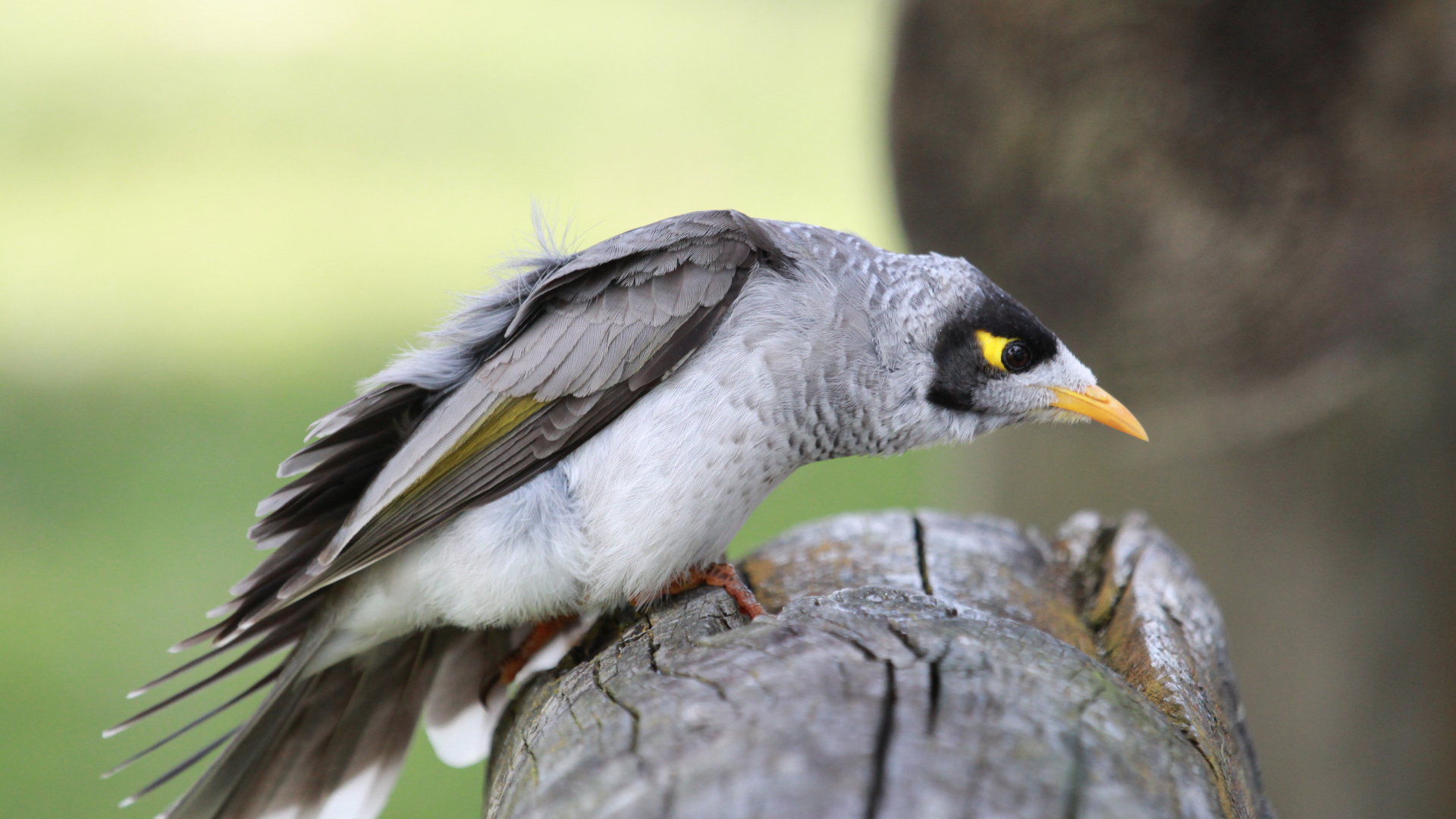
Noisy Miners are a native honeyeater species which has been found in increasing volumes throughout suburban Sydney. Originally, they inhabited regional areas in western Sydney and west of the Blue Mountains, where their ideal habitat of open grassland with tall canopy trees was naturally found. With increased clearing of dense native vegetation, Noisy Miners began expanding in urban areas. For example, a 1983 Concord Municipal Council fauna study recorded Noisy Miners in small numbers in many of our local parks including Queen Elizabeth II Park.
Noisy Mners are especially known for their aggressive behaviour, so much so that in 2014 "Aggressive exclusion of birds from potential woodland and forest habitat by over-abundant noisy miners" was listed by the Commonwealth Government as a Key Threatening Process. When open woodland habitat suits them, they have been proven to directly cause exclusion of many smaller native birds, including threatened species.
It is difficult to prevent the presence of Noisy Miners, as they are a native species and are high in number. We can, however, design and plant our gardens and public spaces to be more favourable to other bird species using the following tips. Read our Backyards for Biodiversity guide for more detailed tips.
- Plant dense vegetation including hedges, native shrubs and bushes
- Place water sources inside bushes or hedges
- Avoid pruning lower branches of trees too much, as Noisy Miners prefer open areas for swooping.
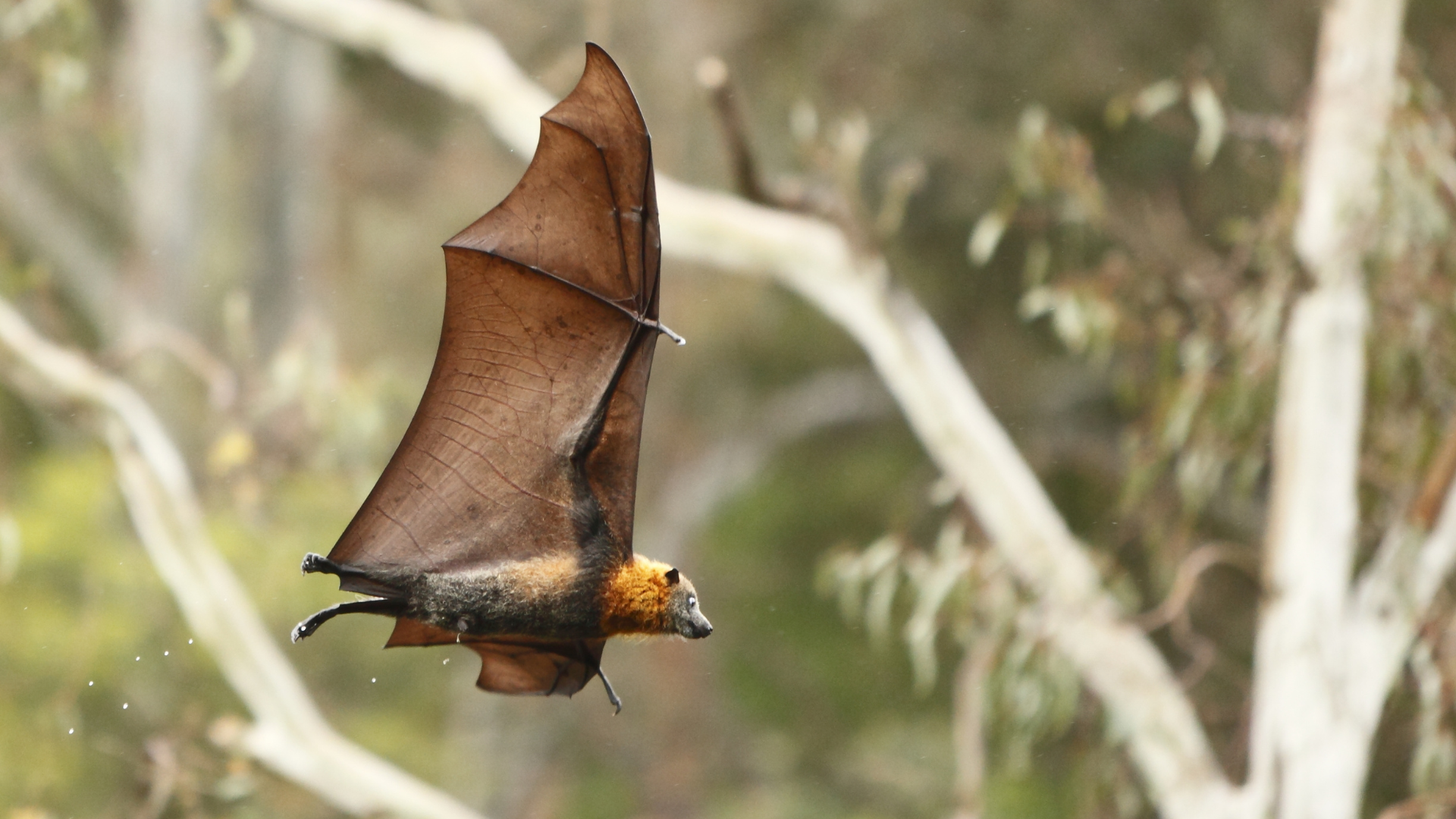
The City of Canada Bay does not contain a roosting camp of flying-foxes, or fruit bats as they are sometimes known, however we are lucky enough to be visited by flying-foxes at dusk and night time when they feed on flowering and fruiting trees.
The most common species of flying-fox found in Canada Bay is the Grey-headed Flying-fox, which is native to the east coast and classified as 'Vulnerable' by the NSW Government, being threatened with extinction by habitat loss and a warming climate. The species is nocturnal and roosts together in camps during the day. Temperatures hotter than 40°C can cause them to fall from trees and die from heat-stress during the day. If you do you see flying-foxes on the ground in distress, please do not touch them but contact WIRES on 13 000 WIRES.
Benefits of Flying-foxes
Flying-foxes are important pollinators of our plants and crops. Unlike other pollinators such as bees and birds, flying-foxes can transport pollen over vast distances and can disperse larger seeds. This makes them vital for many of our native plants and important for the longevity of many fruit trees and vines.
You have likely noticed them arriving in the City of Canada Bay at dusk when it gets cooler, looking for flowering and fruiting trees to settle and feed in. They are social creatures and often chatter amongst themselves as they feed.
Impacts of Flying-foxes
Land clearing, climate change and bushfires are driving many flying-foxes to relocate to urban areas, which can put them into conflict with humans.
Most impacts of Flying-foxes are social, such as the smell and appearance of droppings on footpaths or cars.
There are minimal health impacts from flying-foxes, such as contracting Australian Bat Lyssavirus (ABLV). However, only around 1% of the wild Grey-headed Flying-fox population is known to carry ABLV and the risk of contracting any disease directly from a flying-fox or their droppings is minimal provided no direct handling occurs.
NSW Health advises that there is no risk to the public from working, playing, or residing near flying-foxes, or from contact with their droppings or urine. The only risk to members of the public is from direct contact with an infected animal, via a bite or scratch. It is important to note that there have been no recorded instances of a human contracting a virus from flying-fox droppings or urine, and that the only instances of ABLV have affected unvaccinated wildlife carers directly scratched or bitten.
As with any wild animal, please do not touch any injured flying-foxes and instead contact WIRES on 13 000 WIRES
Find out more about the Australian Bat Lyssavirus from this NSW Department of Primary Industries Factsheet.
Tips for living with flying-foxes
Flying-foxes will only visit trees when they are flowering or producing fruit, so if you notice them in your trees, be assured they won't be there for long. While they are visiting your property to feed, you can follow these tips to reduce their impact:
- Never leave washing drying out overnight
- Never leave pet food outside overnight
- Remove palm tree fruit regularly and cover orchard fruit trees with netting
- Hang shiny objects such as CDs or aluminium foil to dissuade them
- Cover cars or any surfaces you don't want impacted by droppings.
For more information about flying-foxes, you can visit the NSW Government's Flying-fox page, or contact Council's Sustainability team by calling 9911 6555 or emailing environment@canadabay.nsw.gov.au.
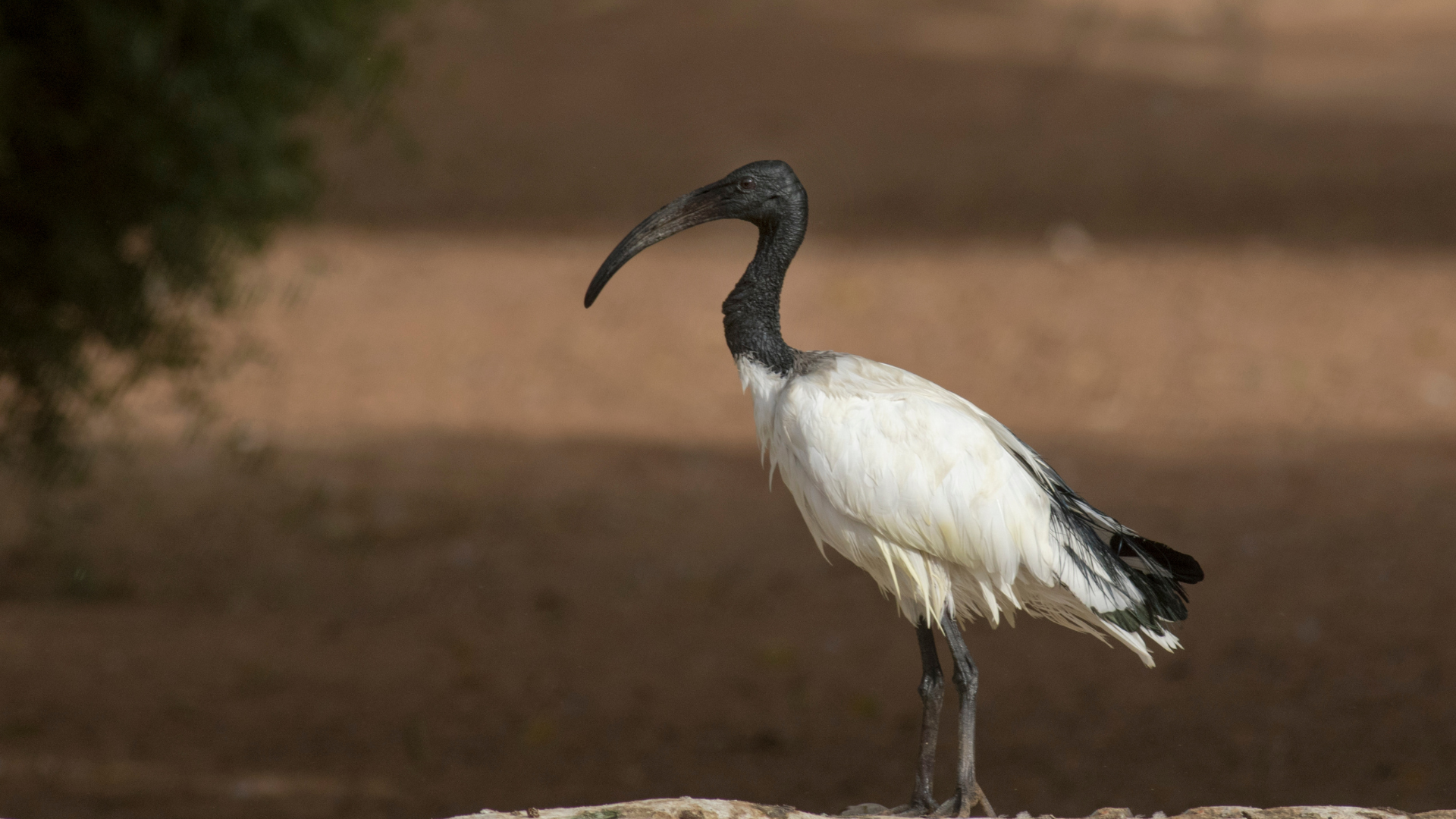
Originally native to inland areas, the Australian White Ibis began emigrating to coastal areas from the 1970s and more prominently in the 2000s due to ongoing droughts and lack of water flows from upstream agriculture in the Murray Darling Basin. In suburban Sydney, they have found abundant food sources and sites for suitable nesting and breeding, often preferring artificial ponds in parks and exotic palm trees to nest in.
Ibises can be disruptive, rummaging through rubbish and leaving excess waste from droppings. So what can you do to help manage them? To help local government and scientists better understand the Ibises, you can record their sightings on the Big City Birds app. Other things you can do to minimise their impact include:
- Avoid feeding any wildlife, as Ibises can often scavenge what other animals leave behind.
- Contain all litter in enclosed, lidded bins.
- Don't leave food, including pet food, outside.
- Prune trees Ibises are likely to nest in. Note that pruning of trees may require a Tree Pruning and Removal Application to be sent to Council.
There are three threatened ecological communities or plant community types within the City of Canada Bay local government area, as well as several threatened individual plants...
- Sydney Turpentine-Ironbark Forest (STIF) is the most common vegetation type in the City of Canada Bay. It exists on the fertile, deep, shale-derived clay soils of Concord, Concord West, North Strathfield, Canada Bay and parts of Five Dock. The widespread loss of STIF throughout the Sydney Basin has resulted in its listing under the NSW Biodiversity Conservation Act 2016 as an Endangered Ecological Community.
STIF is recognised by the presence of turpentine trees (Syncarpia glomulifera), as well as ironbark Eucalyptus species with dark, furrowed bark such as Eucalyptus fibrosa and Eucalyptus paniculata. Great examples of STIF canopy trees can be found at Rothwell Park, Concord, or behind Concord Library. More complete plant communities of STIF are found at Queen Elizabeth Park, Concord, where the understorey vegetation is comprised of regenerated and revegetated plants. Two unique stands of remnant STIF bushland also remain in Yaralla Estate. - Coastal Saltmarsh is an especially important and threatened plant community, with less than 10% of its original coverage remaining in Sydney. Saltmarsh is also highly important food for native fish, and helps to capture and recycle carbon from our atmosphere.
The City of Canada Bay is one of the few Council areas in Sydney where Coastal Saltmarsh vegetation communities still survive. This assemblage of salt tolerant species grows in the inter-tidal zone, usually behind a band of protective mangroves. Coastal Saltmarsh is listed as an Endangered Ecological Community under the NSW Biodiversity Conservation Act 2016.
This vegetation community occurs in the intertidal zone on the shores of estuaries and lagoons. In the City of Canada Bay it is frequently found on the landward side of mangrove stands. Saltmarsh in the City of Canada Bay is characterised by Sea Rush (Juncus kraussii), Samphire (Sarcocornia quinqueflora), Salt Couch (Sporobolus virginicus), Club Rush (Ficinia nodosa), Austral Seablite (Suaeda australis) and Coast Couch (Zoysia macrantha).
Some good examples of surviving Coastal Saltmarsh are found at Prince Edward Park, Cabarita, behind mangroves in Yaralla Bay and Brays Bay, as well as small pockets in Iron Cove. Council is committed to protecting and restoring these areas, with much of the important work done by our dedicated Bushcare team and volunteers. You can visit our Bushcare page for more information or to register as a Bushcare volunteer.
- Swamp Oak Floodplain Forest is associated with the areas usually occurring on salty floodplain areas and is characterised by tree species including Swamp She Oak (Casurina glauca) and Paperbarks (Melaleuca species), as well as groundcover plant species such as Centella (Centella asiatica), Scurvy Weed (Commelina cyanea), Spotted Knotweed (Persicaria decipiens), Tall Sedge (Carex appressa), Saw Sedge (Gahnia clarkei), Mat Rush (Lomandra longifolia), Basket Grass (Oplismenus imbecillis), and Harsh Ground Fern (Hypolepis muelleri).
The widespread loss of Swamp Oak Floodplain Forest throughout the Sydney Basin has resulted in its listing under the NSW Biodiversity Conservation Act 2016 as an Endangered Ecological Community.
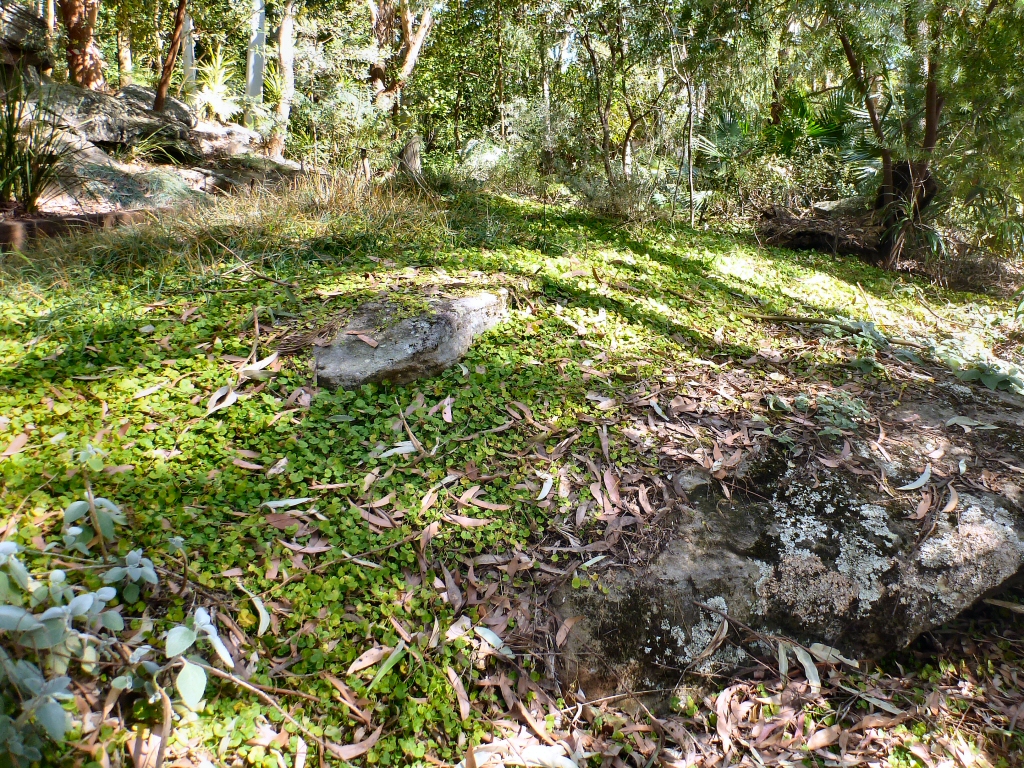
You can view our Native Garden Factsheet for a brief list of native plants in the City of Canada Bay area that are suitable for planting in your garden, as well as tips for creating habitat features for our native wildlife including native bees, butterflies and small birds.
If you would like more information on native plants suitable to plant in your local area or advice on when Council's next native plant giveaway is taking place, please contact Council’s Environmental Officer - Natural Resources on 9911 6480 or environment@canadabay.nsw.gov.au

